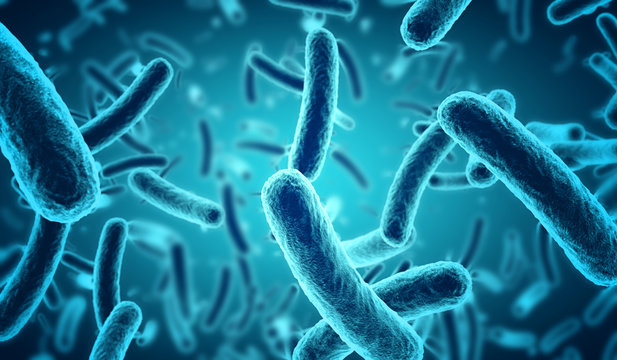About pertussis
Pertussis or whooping cough, a highly contagious respiratory disease is caused by the bacterium Bordetella pertussis or with milder symptoms by Bordetella parapertussis. Before general vaccinations pertussis was one of the leading causes for infant deaths. First vaccines (killed whole bacteria) became available on the 1940s and dramatically dropped number of pertussis cases in many countries. Later, vaccines with purified B. pertussis antigens (acellular vaccines, ACV) replaced the use of whole-cell vaccines (WCV) in industrial countries. However, despite widely implemented childhood immunisations, pertussis still circulates and causes epidemics globally. In 2012, nationwide epidemics of pertussis occurred in several countries including the Netherlands, the United Kingdom (UK) and the United States [1]. According to the estimations from the World Health Organization (WHO), 151 074 cases of pertussis were globally reported in 2018 [2]. The pertussis vaccines and vaccination schedules vary among European and other countries. Currently, all European countries (except Poland) have switched from WCVs to ACVs for primary vaccinations. The ACVs consist of one to five antigens of B. pertussis, including pertussis toxin (PT), pertactin (PRN), Filamentous haemagglutinin (FHA) and fimbriae (Fim) [3]. Vaccine-induced immunity is considered to last only up to 10 years [4,5].
Since mid-2023 the number of reported pertussis cases has significantly increased in Europe. According to ECDC, an increased number of pertussis cases has been reported in many EU/EEA countries [6]. There are more than 35 000 pertussis cases reported in 2023 and 25 000 in 2024 (until April) from 27 out of the 30 EU/EEA countries. In 2023 and so far in 2024, 19 deaths have been reported: 11 (58%) in infants <1 year and 8 (42%) in older adults (60+ years). Worldwide, according to information on Global Public Health Intelligence Network (GPHIN), an increase in pertussis has been reported in many countries, including Australia, Brazil, Canada, China, Serbia, USA and UK.
Multiple factors have been considered as a reason for pertussis resurgence. First of all, we need to keep in mind that pertussis has always been considered as a cyclic disease with epidemic of every 3-5 years [7]. Secondly, the vaccine induced protection is not life-long and the current ACVs seem not to protect from infection nor transmission of the disease [8,9]. Thirdly, awareness and reporting has been improved and the disease is more frequently diagnosed and laboratory confirmed [8]. In addition, one important factor behind the pertussis resurgence is the molecular changes on the pathogen level [8]. When WCV vaccines were widely used, divergence in the main virulence factors (PT, PRN) was noticed between circulating isolates and strains used for production of WCVs [10]. After ACVs were introduced, further changes in these vaccine antigens were found. As the pressure from these ACV vaccines were mainly directed against PT, PRN, FHA and FIM antigens, B. pertussis not producing these antigens started to appear [11,12]. Especially, frequency of PRN deficient isolates was increased to more than 80% in the US and Australia [13,14]. Within the EUPERT studies we have shown that this frequency was increased from 1% (during 1998-2001) to 25% (2012-2015) in Europe, and the longer the period since the introduction of ACVs containing PRN, the higher the frequency of circulating PRN-deficient isolates [15]. During the COVID-19 pandemic, many non-pharmaceutical interventions (NPIs) have been used and have significantly affected incidence of many respiratory infections including pertussis. What has been the effect of COVID-19 pandemic on B. pertussis bacterial populations remains to be studied. Among the Finnish B. pertussis isolates collected in 2024, none had PRN deficiency, whereas in 2019 before COVID-19 40% of circulating isolates had PRN deficiency.
References
- Mills KH et al. Do we need a new vaccine to control the re-emergence of pertussis? Trends in microbiology. 2014;22(2):49-52.
- World Health Organization (WHO). Health Topics: Pertussis – Overview 2022. Available from: https://www.who.int/healthtopics/pertussis#tab=tab_1.
- Berbers GA et al. Improving pertussis vaccination. Hum Vaccin. 2009;5(7):497-503.
- Wendelboe AM et al. Duration of immunity against pertussis after natural infection or vaccination. Pediatr Infect Dis J. 2005;24(5 Suppl):S58-61.
- Guiso N et al. Long-term humoral and cell-mediated immunity after acellular pertussis vaccination compares favourably with whole-cell vaccines 6 years after booster vaccination in the second year of life. Vaccine. 2007;25(8):1390-7.
- European Centre for Disease Prevention and Control. Increase of pertussis cases in the EU/EEA, 8 May 2024. Stockholm: ECDC; 2024.
- Bouchez V & Guiso N. Bordetella pertussis, parapertussis, vaccines and cycles of whooping cough. FEMS Pathogens and Disease, 2015, 73:ftv055.
- Cherry J. Pertussis: Challenges Today and for the Future. PLoS Pathog. 2013; 9(7): e1003418.
- Warfel J et al. Acellular pertussis vaccines protect against disease but fail to prevent infection and transmission in a nonhuman primate model.
- Mooi F et al. Polymorphism in the Bordetella pertussis virulence factors P.69/pertactin and pertussis toxin in the Netherlands: temporal trends and evidence for vaccine-driven evolution. Infect. Immun. 1998; 66:670-675.
- Bouchez V et al. First report and detailed characterization of pertussis isolates not expressing Pertussis Toxin or Pertactin. Vaccine. 2009;27(43):6034-41.
- Stefanelli P et al. A natural pertactin deficient strain of Bordetella pertussis shows improved entry in human monocyte-derived dendritic cells. New Microbiol. 2009;32(2):159-66..
- Martin SW et al. Pertactin-negative Bordetella pertussis strains: evidence for a possible selective advantage. Clin Infect Dis. 2015;60(2):223-7.
- Xu Z et al. Pertactin-Negative and Filamentous Hemagglutinin-Negative Bordetella pertussis, Australia, 2013–2017. EID. 2019; 8:1196-1199.
- Barkoff AM et al. Pertactin-deficient Bordetella pertussis isolates: evidence of increased circulation in Europe, 1998 to 2015. Euro Surveill. 2019;24(7):pii=1700832.
